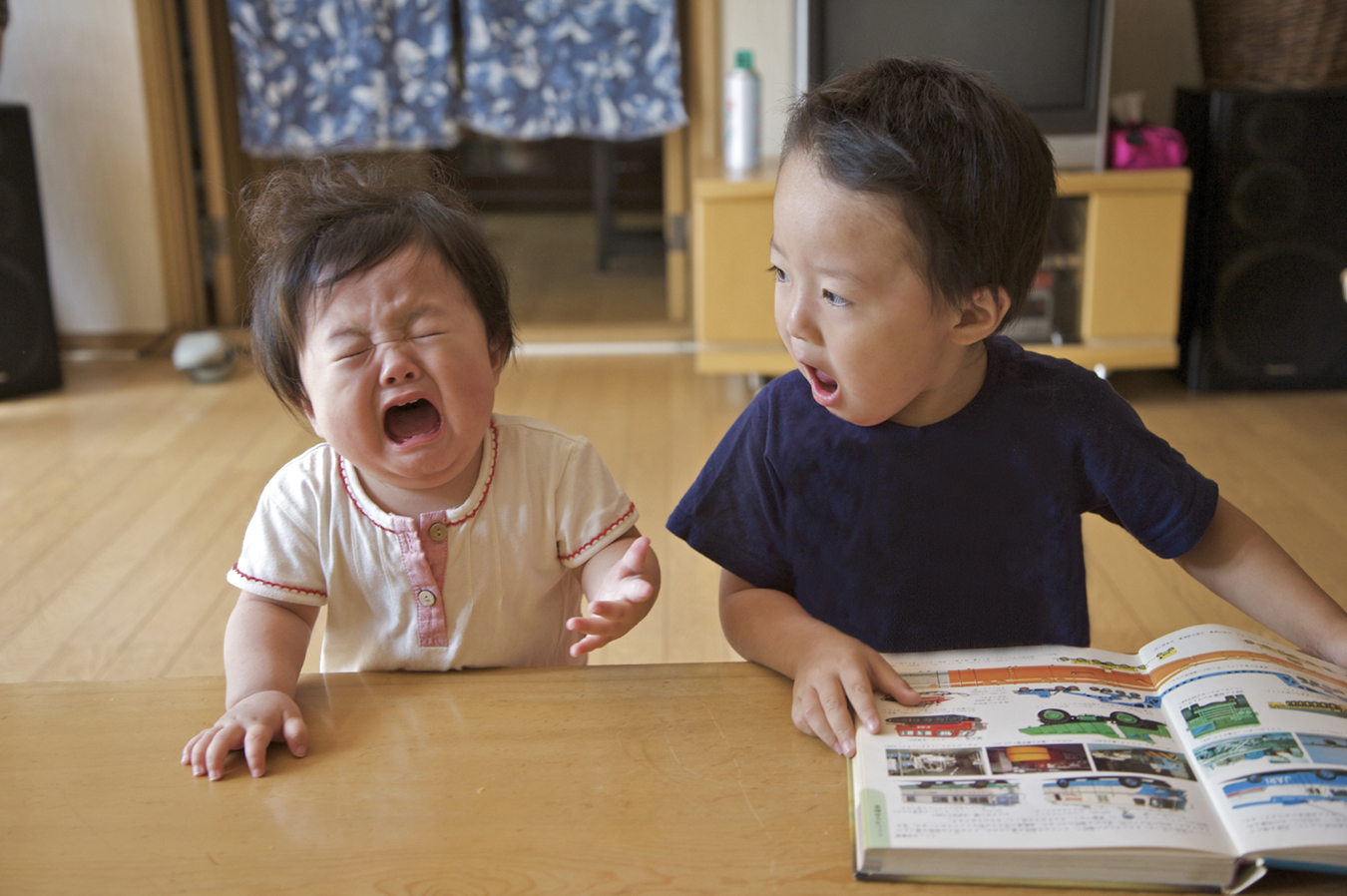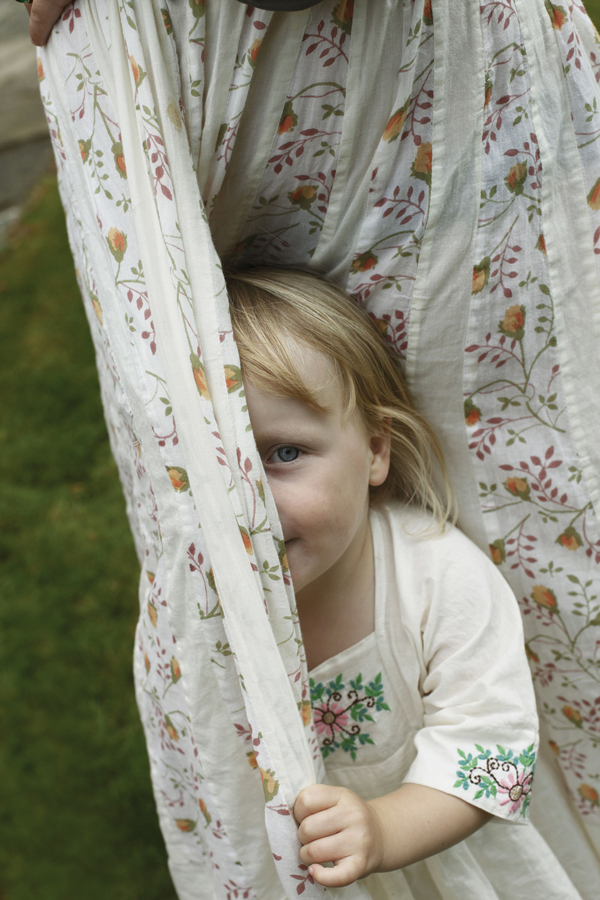10.1 Emotional Development
emotional regulation The ability to control when and how emotions are expressed.
Children gradually learn when and how to express emotions, becoming more capable in every aspect of their lives (Buckley & Saarni, 2009; Morrison et al., 2010). Controlling the expression of emotions, called emotional regulation, is the preeminent psychosocial task between ages 2 and 6 (N. Eisenberg et al., 2004).
effortful control The ability to regulate one’s emotions and actions through effort, not simply through natural inclination.
Such regulation is virtually impossible in infancy, but when the emotional hot spots of the limbic system connect to the prefrontal cortex, children become better able to control their reactions. This is not easy; it requires practice, maturation, and work, called effortful control. By age 6, children can usually be angry but not explosive, frightened but not terrified, sad but not inconsolable, anxious but not withdrawn, proud but not boastful. Depending on each child’s temperament, some emotions are easier to control than others, but even temperamentally angry or fearful children can learn to modify the expression of their emotions (Moran et al., 2013, Tan et al., 2013).
276
Emotional regulation is a lifelong necessity; no one does it perfectly all the time. When Rachel dropped the orange juice, I should not have yelled. Fortunately, my unregulated expression of anger stopped there. Learning to regulate emotion is a long process; it begins during early childhood, from ages 3 to 5 (Lewis, 2013).
Initiative versus Guilt
initiative versus guilt Erikson’s third psychosocial crisis, in which children undertake new skills and activities and feel guilty when they do not succeed at them.
During Erikson’s third developmental stage, initiative versus guilt, children acquire many skills and competencies in addition to emotional regulation. Initiative can mean several things—

Usually, North American parents encourage enthusiasm, effort, and pride in their 2-
Protective Optimism
Children’s beliefs about their worth are connected to parental confirmation, especially when parents remind their children of their positive accomplishments (“You helped Daddy sweep the sidewalk. You made it very clean.”).
Remember that Erikson described autonomy at ages 1 and 2, a stage often characterized by stubbornness and nicknamed “the terrible twos.” By age 3, autonomy is transformed to become initiative, as children act on their eagerness to learn new skills (Rubin et al., 2009).
This chapter’s opening anecdote is an example: Rachel was learning to get juice when she was thirsty. Both autonomy and initiative are more prized in Western cultures than in Eastern ones, where children learn to be socially attuned and interdependent (Keller & Otto, 2011).
self-
Children in North America and Europe develop a strong self-
Erikson recognized that young children are not realistic. They believe that they are strong, smart, and good-
For instance, young children not only believe that their nation and religion are best, they feel sorry for children who do not belong to their country or church. At this age, a protective optimism encourages children to try unfamiliar activities, make friends, begin school, and so on (Boseovski, 2010). The same is true for mastering skills: They learn to pour juice, zip pants, and climb trees, undeterred by overflowing juice, stuck zippers, or a perch too high. Faith in themselves helps them persist.
Brain Maturation

The new initiative that Erikson describes results from myelination of the limbic system, growth of the prefrontal cortex, and a longer attention span—
277
Normally, neurological advances in the prefrontal cortex at about age 4 or 5 make children less likely to throw tantrums, provoke attacks, or giggle during prayer (Kagan & Herschkowitz, 2005). Throughout early childhood, violent outbursts, uncontrolled crying, and terrifying phobias (irrational, crippling fears) diminish. The capacity for self-
For example, in one study researchers asked children to wait 8 minutes while their mothers did some paperwork before opening a wrapped present in front of them (Cole, Tan et al., 2011). The children used strategies to help them wait, including distractions and private speech.
Keisha was one of the study participants:
“Are you done, Mom?” … “I wonder what’s in it” … “Can I open it now?”
Each time her mother reminds Keisha to wait, eventually adding, “If you keep interrupting me, I can’t finish and if I don’t finish …” Keisha plops in her chair, frustrated. “I really want it,” she laments, aloud but to herself. “I want to talk to mommy so I won’t open it. If I talk, Mommy won’t finish. If she doesn’t finish, I can’t have it.” She sighs deeply, folds her arms, and scans the room … The research assistant returns. Keisha looks at her mother with excited anticipation. Her mother says, “OK, now.” Keisha tears open the gift.
[Cole, Armstrong et al., 2011, p. 59]
Motivation
intrinsic motivation A drive, or reason to pursue a goal, that comes from inside a person, such as the desire to feel smart or competent.
extrinsic motivation A drive, or reason to pursue a goal, that arises from the need to have one’s achievements rewarded from outside, perhaps by receiving material possessions or another person’s esteem.
Motivation (the impulse that propels someone to act) comes either from a person’s own desires or from the social context.
Intrinsic motivation occurs when people do something for the joy of doing it: A musician might enjoy making music even when no one else hears it. Extrinsic motivation comes from outside the person, when people do something to gain praise (or some other reinforcement): A musician might play for applause or money.
Especially for College Students Is extrinsic or intrinsic motivation more influential in your study efforts?
Response for College Students: Both are important. Extrinsic motivation includes parental pressure and the need to get a good job after graduation. Intrinsic motivation includes the joy of learning, especially if you can express that learning in ways others recognize. Have you ever taken a course that was not required and was said to be difficult? That was intrinsic motivation.
Intrinsic motivation is crucial for young children (Cheng & Yeh, 2009). Fortunately, preschool children are often intrinsically motivated, eager to play and practice, whether or not someone else wants them to. Child-
Imaginary Friends
imaginary friends Make-
Intrinsic motivation is apparent when children invent dialogues for their toys, concentrate on creating a work of art or architecture, and converse with imaginary friends. Such conversations with invisible creatures are rarely encouraged by adults (i.e., there is no extrinsic motivation), but imaginary friends are nonetheless increasingly common over the years of early childhood. Children know their imaginary friends are invisible and pretend, but conjuring them up meets various psychosocial needs (Taylor et al., 2009).
Especially for Teachers One of your students tells you about a child who plays, sleeps, and talks with an imaginary friend. Does this mean that that child is emotionally disturbed?
Response for Teachers: No, unless the child is over age 10. In fact, imaginary friends are quite common, especially among creative children. The child may be somewhat lonely, though; you could help him or her find a friend.
For example, imaginary friends may help with emotional regulation: Children use them to control their fears and temper as well as to provide comfort and companionship. One girl’s friend named Elephant was “7 inches tall, gray color, black eyes, wears tank top and shorts … sometimes is mean” (Taylor et al., 2004, p. 1178). By having a companion who “sometimes is mean,” this girl was developing strategies to deal with mean people.
278
An Experiment in Motivation
In a classic experiment, preschool children were given markers and paper for drawing and assigned to one of three groups who received, respectively: (1) no award, (2) an expected award (they were told before they had drawn anything that they would get a certificate), and (3) an unexpected award (after they had drawn something, they heard, “You were a big help,” and got a certificate) (Lepper et al., 1973).
Especially for Teachers of Young Children Should you put gold stars on children’s work?
Response for Teachers of Young Children: Perhaps, but only after the work is completed and if the child has put genuine effort into it. You do not want to undercut intrinsic motivation, as happens with older students who know a particular course will be an “easy A”
Later, observers noted how often children in each group chose to draw on their own. Those who received the expected award were less likely to draw than those who were unexpectedly rewarded. The interpretation was that extrinsic motivation (condition #2) undercut intrinsic motivation.
This research triggered a flood of studies seeking to understand whether, when, and how positive reinforcement should be given. The consensus is that praising or paying a person after an accomplishment sometimes encourages that behavior. However, if payment is promised in advance, that extrinsic reinforcement may backfire (Deci et al., 1999; Cameron & Pierce, 2002; Gottfried et al., 2009).
Praise is effective when it is connected to the particular production, not to a general trait (“You did a good drawing,” not “You are a great artist”) because then the child believes that effort paid off, which motivates a repeat performance (Zentall & Morris, 2010).
Culture and Emotional Control
As you know, cultural differences are apparent in every aspect of development. This is quite obvious in emotional expression. Children may be encouraged to laugh/cry/yell or, the opposite, to hide their emotions (H. S. Kim et al., 2008). Some adults guffaw, slap their knees, and stomp their feet for joy; others cover their mouths with their hands if a smile spontaneously appears. Children learn to do the same.
Control strategies vary as well (Matsumoto, 2004). Peers, parents, and strangers sometimes ignore emotional outbursts, sometimes deflect them, sometimes punish them. Shame is used when social reputation is a priority. In some cultures, “pride goeth before a fall” and people who “have no shame” are considered mentally ill (Stein, 2006).
Finally, certain families, cultures, and nations differ as to which emotions most need to be regulated. Although individuals may disagree with the following generalizations, developmentalists suggest that nations emphasize regulation as follows:
- Fear (United States)
- Anger (Puerto Rico)
- Pride (China)
- Selfishness (Japan)
- Impatience (many Native American communities)
- Defiance (Mexico)
- Moodiness (the Netherlands)
(Chen, 2011; Harkness et al., 2011; J. G. Miller, 2004; Stubben, 2001)
Of course, this list is oversimplified. Temperaments vary, which makes people within the same culture unlike one another. “Cultures are inevitably more complicated than the framework that is supposed to explain them” (Harkness et al., 2011, p. 92). Nonetheless, parents everywhere teach emotional regulation, hoping their children will adapt to the norms of their culture.
279
Seeking Emotional Balance
psychopathology Literally, an illness of the mind, or psyche. Various cultures and groups within cultures have different concepts of a specific psychopathology. A recent compendium of symptoms and disorders in the United States is in the DSM-
At every age, in all cultures and cohorts, caregivers try to prevent psychopathology, an illness or disorder (-pathology) of the mind (psycho-
Without adequate regulation, emotions are overwhelming. Intense reactions can occur in opposite ways, as you might expect from the activate/inhibit nature of neurons.
externalizing problems Difficulty with emotional regulation that involves expressing powerful feelings through uncontrolled physical or verbal outbursts, as by lashing out at other people or breaking things.
Some people have externalizing problems: Their powerful feelings burst out uncontrollably. They externalize rage, for example, by lashing out or breaking things. Without emotional regulation, an angry child might flail at another person or lie down screaming and kicking. By age 5, children usually have learned more self-
internalizing problems Difficulty with emotional regulation that involves turning one’s emotional distress inward, as by feeling excessively guilty, ashamed, or worthless.
Other people have internalizing problems: They are fearful and withdrawn, turning distress inward. Emotions may be internalized via headaches or stomachaches. Although the cause is psychological, the ache is real.
Again, with maturity, the extreme fears of some 2-
Both undercontrol, which produces externalizing behavior, and overcontrol, which leads to internalizing behavior, are much more common in 3-
Sex differences in internalizing and externalizing behavior are traditionally assumed to be biological, but a cultural explanation is also possible. Does prenatal testosterone shape boys’ brains, making them more likely to develop ADHD? Or do parents and cultures teach young girls to restrain their externalizing actions, while teaching boys to avoid internalizing? (See Visualizing Development, page 281). Trying to understand the causes of sex or gender differences is a concern of thousands of researchers (Eagly & Wood, 2013). Conflicting theories and evidence are presented later in this chapter.

SUMMING UP
Emotional regulation is the crucial psychosocial task in early childhood. Erikson thought young children are naturally motivated to take initiative, with joy at new tasks. He also thought that during early childhood, guilt feelings may come to the fore, as parents criticize unrestrained emotional expression. Brain maturation and family guidance help children regulate their emotions, avoiding either extreme externalizing or internalizing reactions. Universally, 3-
280
A VIEW FROM SCIENCE
Sex Differences in Emotional Regulation

On average, young girls are advanced in controlling their emotions, particularly anger, compared with boys. (Visualizing Development, p. 281, illustrates gender differences and similarities in several areas of development.) Research on childhood and adolescence traditionally focused on boys. More recently girls have been studied, and it seems that girls’ aggression is more often directed at themselves or at people in their immediate social circle, whereas boys can be aggressive with strangers as well (Loeber et al., 2013). What is the origin of such sex differences? Data from early childhood can be used to support either biological or cultural explanations.
Consider one study (also noted in Visualizing Development) in detail. Researchers gave eighty-
Many boys showed Mark and Scott hitting and kicking each other. Boys whose externalizing behavior worsened between ages 5 and 9 (as rated by teachers and parents) were the most likely to dramatize such attacks at age 5. They became aggressive 9-
By contrast, 5-
The authors of the study wrote:
Gender-
[Zahn-
These researchers suggest that extreme externalization or extreme internalization predicts future psychopathology. Because of cultural expectations, mistreated boys are likely to externalize and mistreated girls to internalize.
An alternative explanation is that something in the hormones or brain structures of boys and girls pushes them in opposite directions. In any case, it seems clear that, unless children master emotional regulation during early childhood, boys throw and hit, and girls sob or hide.